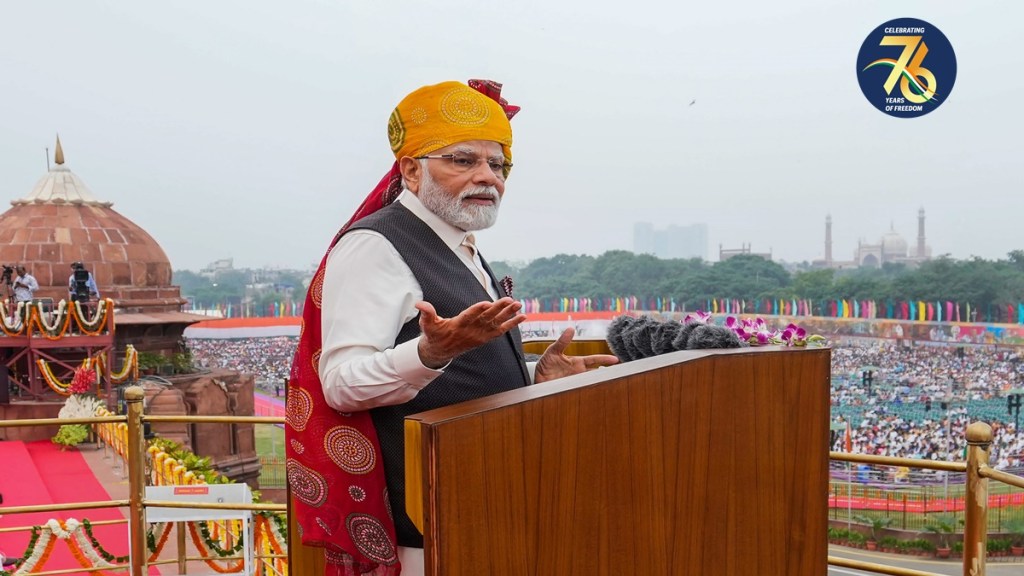The word ‘parivarjan’ (family members) figured as many as 68 times in prime minister Narendra Modi’s close to 90-minute Independence Day address on Tuesday. It was a carefully chosen refrain that will certainly shape the political discourse till at least the 2024 general elections. The PM used the occasion as an opportunity to draw a clear line of distinction between ‘parivarbad’ (dynasty politics) and parivarjan. While addressing the citizens as his family members, Modi also shrewdly personalised the game by positioning himself above the party and making it Modi versus the rest. “I am one of you. I have come from amid you,” he said. Contrast this with his description of the Opposition as dynastic parties which are nothing but “of the family, by the family and for the family”.
This is smart politics, no doubt, but the question that arises is whether the Independence Day is a suitable occasion to make an appeal to voters to elect him for a third term. “In 2019, on the basis of performance, you blessed me…The next time, on August 15, from this Red Fort I will present before you the achievements and developments of the country…” One hopes the PM had made some efforts to be more subtle while addressing the nation from the ramparts of the Red Fort. There would be other questions, too. Though he justifiably criticised the Opposition parties on appeasement and corruption, the fact is that the Bharatiya Janata Party has also been more than willing to entice political families of questionable reputation just to grab power in several states. Take the recent example of Maharashtra, or that of Karnataka where its erstwhile government earned the tag of “40% commission Sarkar”.
When it came to economics, Modi was perhaps on surer footing and the achievements he listed were remarkable enough. Judged in terms of life expectancy, adult literacy and access to food and other basic necessities, Indians today are better off than in the past. India has indeed become the fifth largest economy under his watch from the 10th largest in 2014. He also outlined a bold vision for the country’s economic growth by promising to elevate India to the ranks of the top three global economies within the next five years. It is indeed creditable that 135 million people have escaped poverty between 2015-16 and 2019-21, courtesy improvements in indicators like access to cooking fuel, sanitation, drinking water, and bank accounts, among others.
However, the fact also is that estimates of poverty and inequality in India have been deeply contested. Differences exist among economists not only on data which forms the basis of their estimation, but also on trends over past decades. In the absence of official data for recent years — the last consumption expenditure survey, which forms the basis of poverty and inequality estimates, was for 2011-12 — the issue has been particularly contentious. More so, given the sharp differences of opinion on the extent to which the pandemic exacerbated poverty and inequality.
A Niti Ayog report itself showed that when it came to indicators like nutrition and access to education, the improvement has only been marginal. In his speech, the PM said bringing him back to power would help him pave the way for India becoming a developed nation in 2047 and shape a new world order, when the country celebrates its 100th Independence Day. India obviously faces monumental challenges, including preservation of the country’s social fabric, for achieving that dream.
